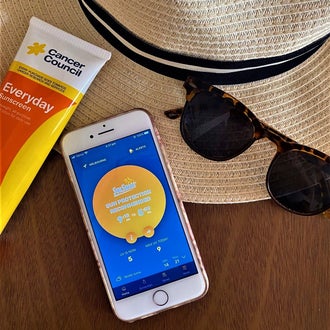iHeard that you only need sun protection if it is a hot, sunny day. Is this true?"
No. You can’t rely on the temperature or how sunny it is outside to determine whether you need to protect yourself from the sun.
Sun damage is caused by ultraviolet (UV) radiation, not heat. Exposure to UV radiation from the sun and other sources, such as solariums, is the major cause of skin cancer. Our high-UV environment, combined with a significant proportion of the population with fair skin types contributes to Australia having one of the highest rates of skin cancer in the world. But the good news is that with good sun protection, skin cancer is almost entirely preventable.
UV can still reach damaging levels on cool or cloudy days. If you notice reddening of your skin after being out on a windy day, it’s likely to be sunburn – there is no such thing as ‘windburn’.
UV radiation can also penetrate some clouds and may even be more intense due to reflection off the clouds, meaning sun damage is still possible on overcast days. But we can’t feel UV until the damage has been done, so how do we know when we need to protect ourselves?
The UV Index and the sun protection times are tools you can use to know when to protect yourself from UV radiation. They tell you the UV level and the times of day that you need to be SunSmart. Sun protection times can be found on the free SunSmart app and are issued by the Bureau of Meteorology when the UV Index is forecast to reach 3 or above. At that level, five forms of sun protection are recommended: Slip on clothing, Slop on SPF50 or SPF50+ broad-spectrum, water-resistant sunscreen,
Slap on a broad-brimmed hat, Seek shade and Slide on sunglasses.
Remember that the UV changes based on your location. In Australia, it increases the further north you go, so if you’re travelling you can change your location in the app to check whether the UV and sun protection times are different from your home location.
Learn more here.

